Dennis Burton (1933-2013)
An Exhibition Commemorating his Six Decade Long Career
Christopher Cutts Gallery
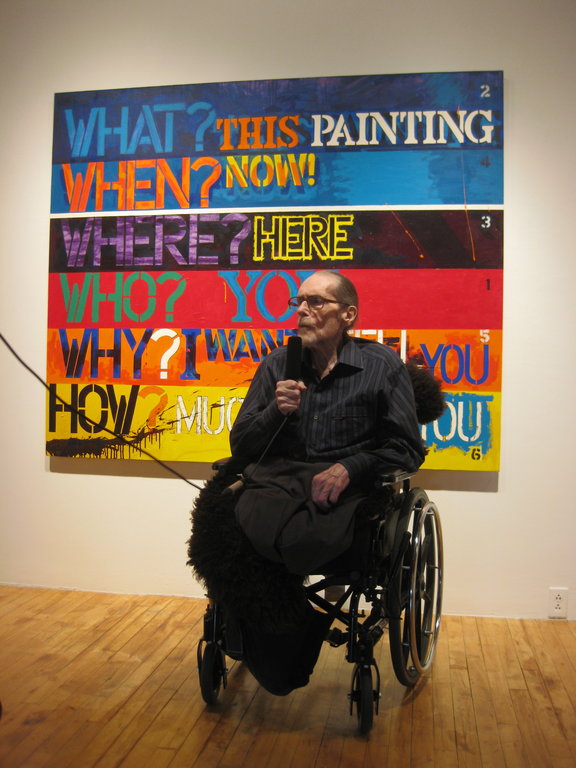 Dennis Burton in front of his painting, Six Questions. Photo: Victor Carvalho
Dennis Burton in front of his painting, Six Questions. Photo: Victor Carvalho
The Toronto art world of 2013 is very far removed from the 1950’s when Dennis Burton along with Graham Coughtry, Gordon Rayner and Robert Markle added zest and passion to it. Many Toronto artists now have New York representation and are known internationally. The schools that teach art are well established and we have a healthy selection of galleries and art museums. No doubt there is room for growth but the basic cultural foundations are in place.
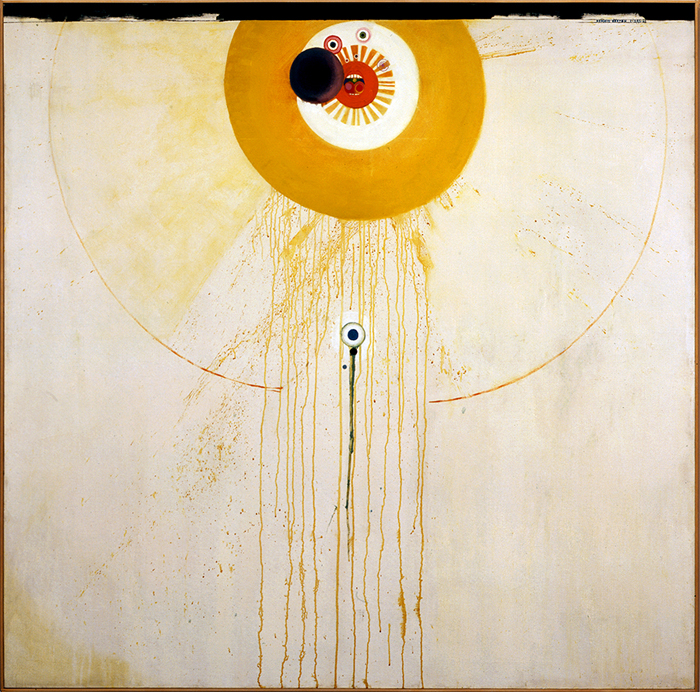 Dennis Burton, Diagram Portrait Reflection of Myself or Any Man as A Finite Universe, 1961. Oil on canvas, 67.5” x 67.5”. Courtesy of Christopher Cutts Gallery
Dennis Burton, Diagram Portrait Reflection of Myself or Any Man as A Finite Universe, 1961. Oil on canvas, 67.5” x 67.5”. Courtesy of Christopher Cutts Gallery
Dennis Burton and company helped make this possible through extraordinary effort and at considerable personal cost, both as teachers and as artists. Burton, born in Lethbridge, Alberta (1933) passed away in Vancouver (2013). Over the course of his career, much of it spent in Toronto, where he taught painting and drawing at the Ontario College of Art (1970-1971), was Director of the New School of Art (1971-1977) and President of Art’s Sake (1977-1978). Further afield, he taught at the Banff School of Fine Arts (1974), University of Lethbridge (1976 & 1989) and the Emily Carr College of Art (1980). Students remember being inspired by his erudite commitment to communicating a sense of contemporary aesthetics in a spirit of enjoyment.
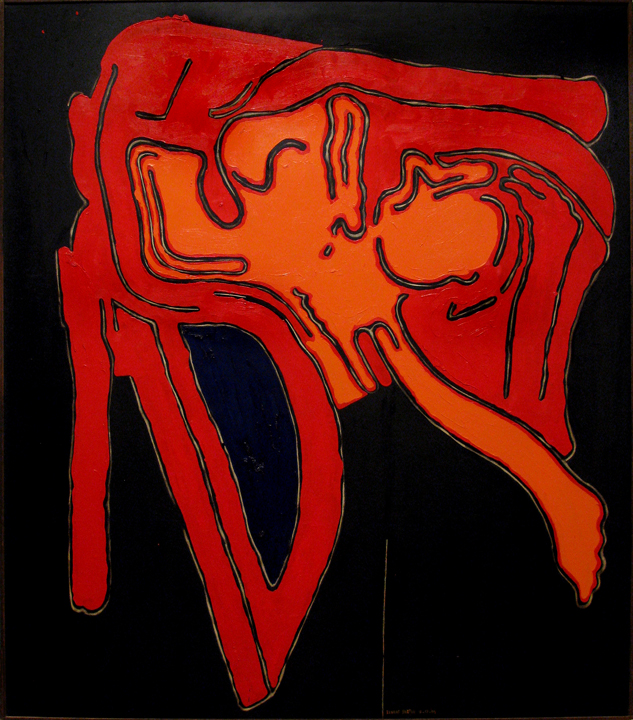 Dennis Burton, Fabros Plunge, 1964. Oil on canvas 48” x 42”. Courtesy of Christopher Cutts Gallery
Dennis Burton, Fabros Plunge, 1964. Oil on canvas 48” x 42”. Courtesy of Christopher Cutts Gallery
There was also a sense of anarchistic experimentation in their lives and work. They formed the Artist’s Jazz Band in Toronto with Burton playing the saxophone. This Neo-Dadaistic connection is echoed in London by equally important contributions from Greg Curnoe (1936-1992) who played with the Nihilism Spasm Band, a noise band still active. They apologize humorously on stage for absent members because they have passed away.
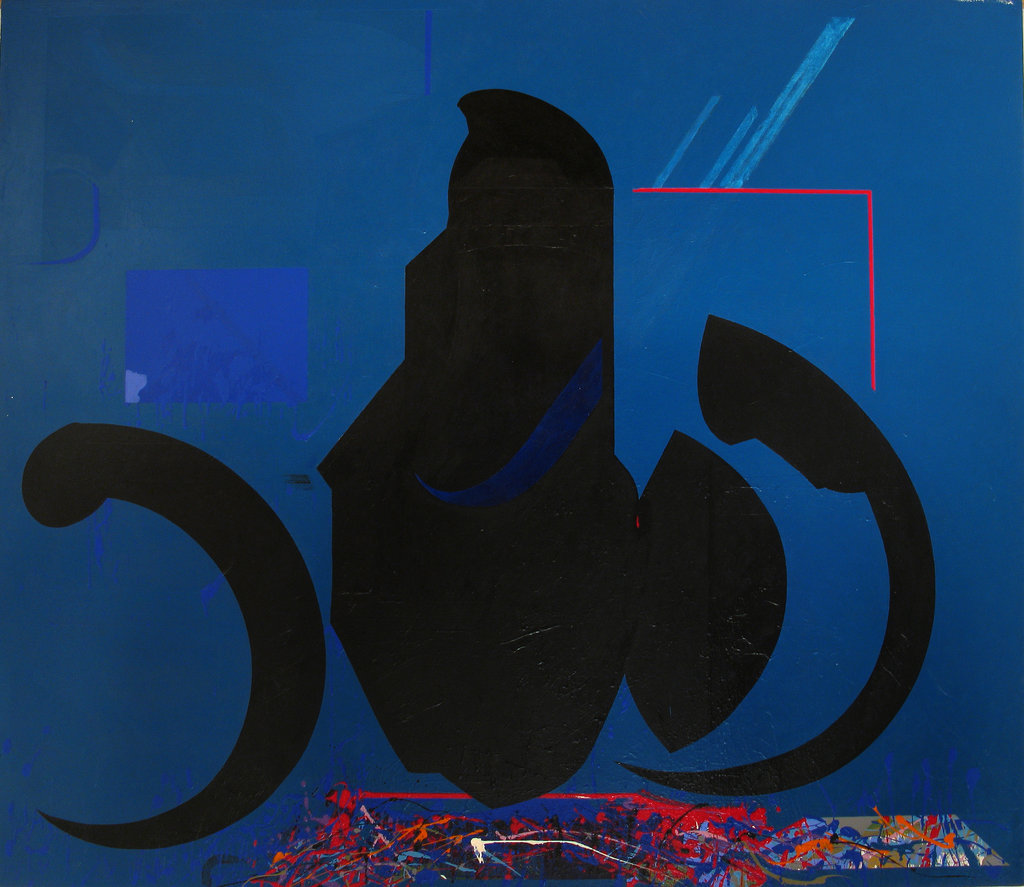 Dennis Burton, Locomotion II, 1975 -76. Acrylic on canvas 72” x 84”. Courtesy of Christopher Cutts Gallery
Dennis Burton, Locomotion II, 1975 -76. Acrylic on canvas 72” x 84”. Courtesy of Christopher Cutts Gallery
In retrospect art historians have judged this period purely in terms of American influence, tending to see the work of Burton and others as derivative. This is to misunderstand the uniquely Torontonian flavor of their work, with its humour and deconstructivist ethics. Nationalism is really just another form of colonization with little regard for the individual artist’s product and ideas. At the time, they received information about the New York art manifestations largely through magazines and the occasional exhibition so there is strong evidence of Abstract Expressionist influence, particularly de Kooning. It’s a significant choice as de Kooning was also loath to throw away his European painting heritage.
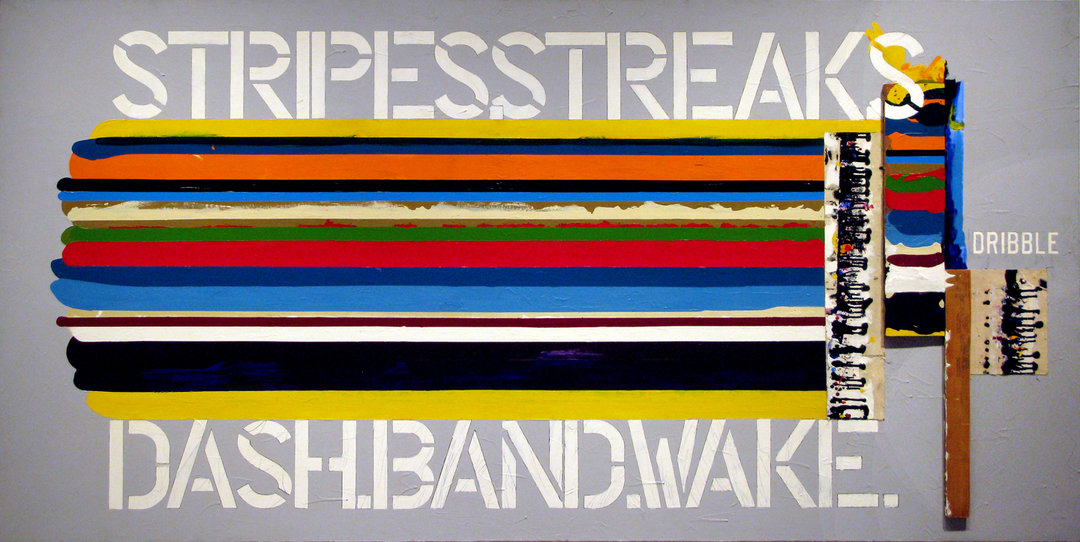 Dennis Burton, Stripe Streak, 1977. Acrylic on canvas 49” x 98”. Courtesy of Christopher Cutts Gallery
Dennis Burton, Stripe Streak, 1977. Acrylic on canvas 49” x 98”. Courtesy of Christopher Cutts Gallery
Marcel Duchamp espoused the ‘beauty of indifference’, drawing attention with his ready-mades to the importance of context for any text, object or image. Musicians like John Cage were exploring percussive sound with ‘prepared’ pianos. Jasper Johns and Robert Rauschenberg epitomized the Neo-Dadaistic response to Abstract Expressionism and Post Painterly Abstraction in works that played with aesthetic elements and included items usually found in other contexts like beer cans, tires, goats, flags and text. Burton’s work can be appreciated as an anarchic delving into modernism, combined with his own love of text, calligraphy and interest in communication. Eroticism played a large role in his work and he became notorious for his Garterbeltmania paintings. These beautiful works explore erotic subject matter in both traditional figurative and abstract forms. Needless to say, they evoked controversy and censorship in an essentially puritanical society.
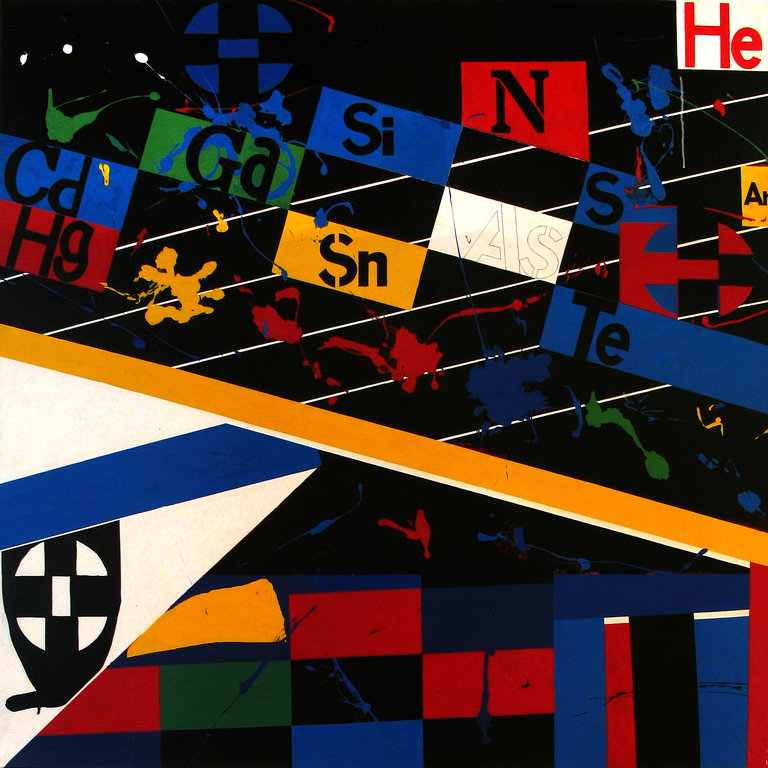 Dennis Burton, Alchemy, 1978. Acrylic on canvas 60” x 60”. Courtesy of Christopher Cutts Gallery
Dennis Burton, Alchemy, 1978. Acrylic on canvas 60” x 60”. Courtesy of Christopher Cutts Gallery
The memorial exhibition features works made in Toronto up to the seventies. Father Dead, Mother well references Robert Motherwell’s work, who’s own Spanish Elegies perhaps have more in common with Neo Dada than Abstract Expressionism. Burton’s interest in astrology and alchemy is also evident in works that seem to reference geometric structures but also refer to planets. Diagram Portrait of Myself or Any Man as a Finite Universe comically links a toothy mouth at the heart of the sun. Wordplay in Six Questions the painting behind him in the portrait image, seem to sum up his devotion to communication, art and love.
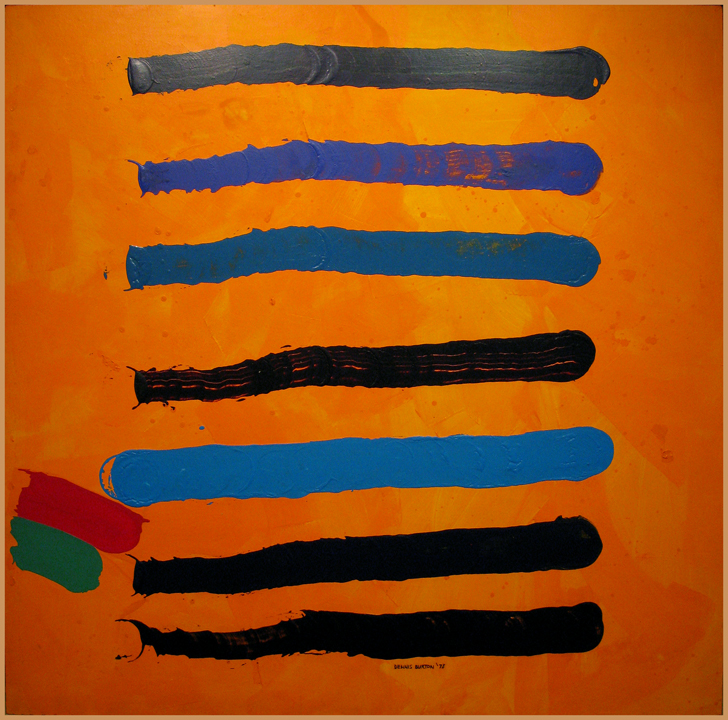 Dennis Burton, Untitled 2, 1978 oil on masonite 49.5” x 50.25”. Courtesy of Christopher Cutts Gallery
Dennis Burton, Untitled 2, 1978 oil on masonite 49.5” x 50.25”. Courtesy of Christopher Cutts Gallery
Burton’s commitment and integrity stand out for me. His paintings are uncompromising and express his ideas regardless of commercial interest. Toronto should be very proud of his contribution and indeed, those of his fellow travelers, represented mostly by the Isaacs Gallery. Their achievements need to be celebrated in a museum exhibition and publication. It will be up to the city to embrace them and ensure that this history is secured.
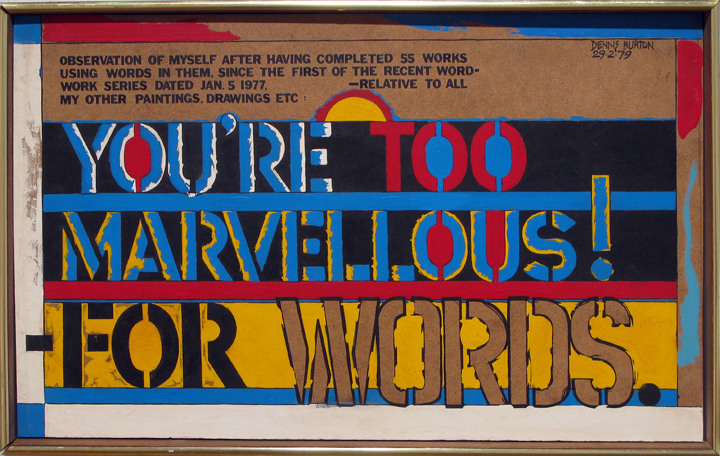 Dennis Burton, Observation, 1979. Mixed media on masonite 12” x 19.5”. Courtesy of Christopher Cutts Gallery
Dennis Burton, Observation, 1979. Mixed media on masonite 12” x 19.5”. Courtesy of Christopher Cutts Gallery
Ashley Johnson
Toronto, 2013
*Exhibition dates: October 5 – 30, 2013, Christopher Cutts Gallery, 21 Morrow Avenue, Toronto. Gallery hours: Tues – Sat 10 – 6p.m.

Great and insightful article Ashley!!
Diane Pugen